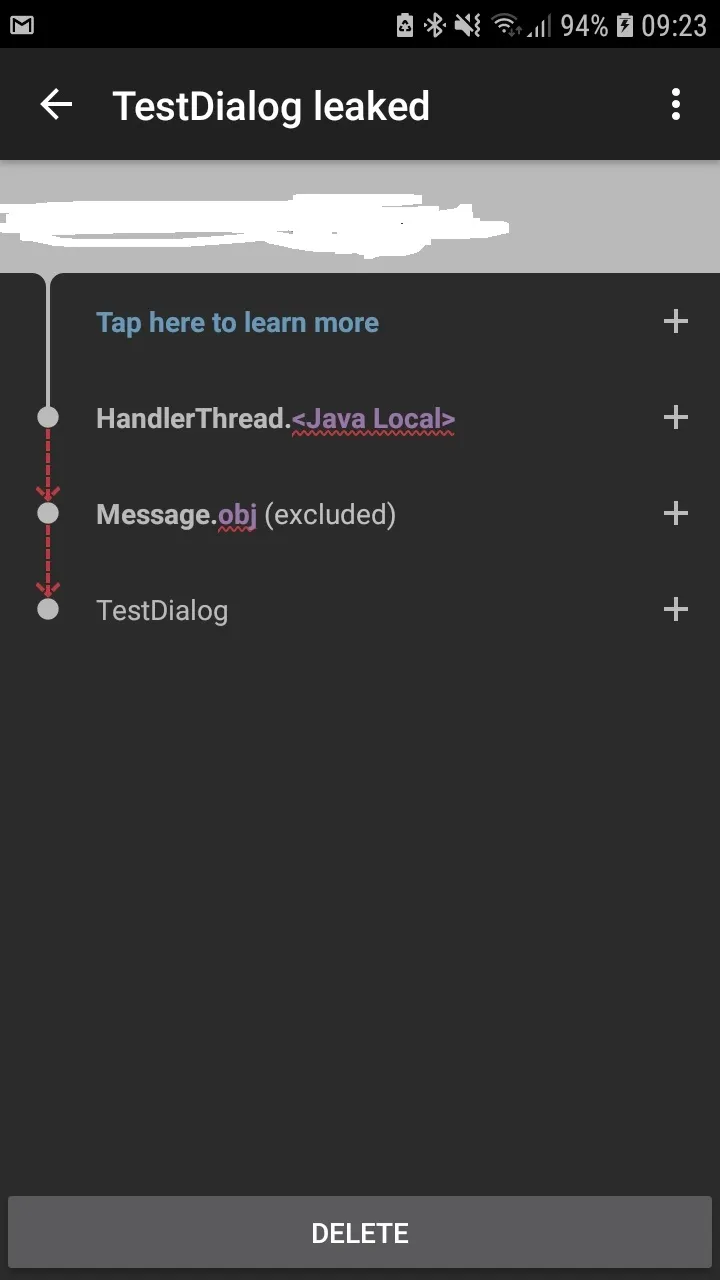每次我尝试展示DialogFragment时都会出现内存泄漏。
这是我测试对话框的样子(取自安卓开发者页面):
public class TestDialog extends DialogFragment {
public static TestDialog newInstance(int title) {
TestDialog frag = new TestDialog();
Bundle args = new Bundle();
args.putInt("title", title);
frag.setArguments(args);
return frag;
}
@Override
public Dialog onCreateDialog(Bundle savedInstanceState) {
int title = getArguments().getInt("title");
return new AlertDialog.Builder(getActivity())
.setIcon(R.drawable.ic_action_about)
.setTitle(title)
.setPositiveButton(R.string.ok,
new DialogInterface.OnClickListener() {
public void onClick(DialogInterface dialog, int whichButton) {
//((FragmentAlertDialog)getActivity()).doPositiveClick();
}
}
)
.setNegativeButton(R.string.cancel,
new DialogInterface.OnClickListener() {
public void onClick(DialogInterface dialog, int whichButton) {
//((FragmentAlertDialog)getActivity()).doNegativeClick();
}
}
)
.create();
}
}
我将其用以下代码启动,该代码在按钮按下时执行:
DialogFragment newFragment = TestDialog.newInstance(R.string.company_title);
newFragment.show(getFragmentManager(), "dialog");
如何解决这个泄漏问题(或者至少隐藏它,因为canaryleak的所有通知都变得非常烦人)?
